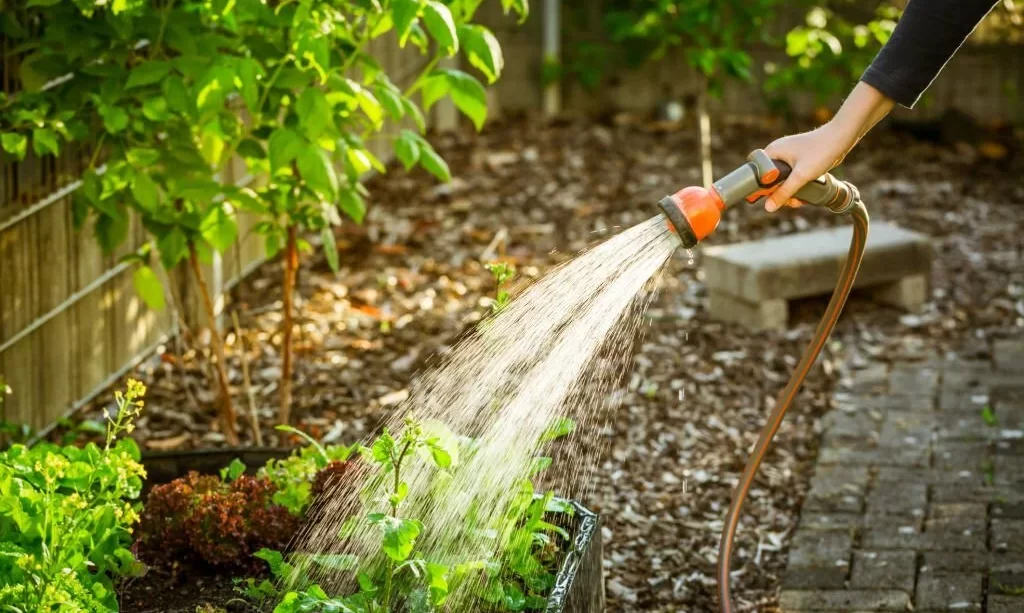In the world of agriculture and gardening, the management of water is a fundamental aspect of nurturing crops to their full potential. Water is a lifeline for plants, sustaining their growth and ensuring the production of healthy, abundant yields. However, there comes a time in every crop’s journey when a critical question arises: “When is the right time to stop watering before harvesting crops?” The answer to this question is not universal, as it depends on a variety of factors. In this article, we will explore the pivotal moment in crop cultivation when ceasing irrigation becomes essential. This knowledge is not only crucial for the quality of your harvest but also for optimizing the flavor and texture of your crops. Let’s delve into the world of water management in crop production and discover the art of timing the cessation of watering for a bountiful yield.
The Role of Water in Crop Growth
Water plays a pivotal role in the life cycle of plants, from germination to harvest. It serves as the medium for nutrient uptake, supports photosynthesis, and ensures the turgidity of plant cells. During various growth stages, crops have specific requirements for water. In the early stages, seeds need moisture to sprout and establish roots. As plants grow, they rely on water for nutrient transportation, energy production, and the synthesis of sugars. However, as crops approach maturity and the time for harvest draws near, there is a delicate balance between providing enough moisture for optimal growth and preventing overwatering, which can dilute flavor and negatively affect the texture of fruits and vegetables. Finding this balance is key to achieving the best quality produce.
Factors Affecting the Decision
The decision to stop watering before harvest is influenced by a multitude of factors, making it a dynamic process. Crop type is a significant consideration. Different crops, whether they are fruits, vegetables, or grains, have unique water needs and optimal moisture levels for harvesting. Climate also plays a vital role. In regions with high humidity, the risk of disease and rot can increase as harvest time approaches, necessitating careful water management. Soil moisture levels are another critical factor, as soils that retain water longer may require earlier cessation of irrigation. Additionally, crop maturity is a key indicator. Many crops exhibit visual and tactile cues, such as changes in color, texture, and firmness, signaling readiness for harvest. Balancing all of these factors is a skill that seasoned gardeners and farmers hone over time, allowing them to make informed decisions on when to cease watering and commence the harvest of their crops.
Timing for Specific Crops
The optimal timing for ceasing irrigation before harvest can vary significantly depending on the specific crop you are cultivating. For instance, tomatoes, often the highlight of many gardens, should ideally experience reduced watering as they begin to ripen. This helps concentrate flavors and prevents issues like cracking. Similarly, sweet corn is at its prime when the kernels are plump and milky. Reducing water at this stage helps achieve the ideal sweetness. Lettuce, on the other hand, benefits from consistent, light watering to maintain crispness and prevent bitterness. Understanding the unique requirements of each crop is crucial. Observation of the crop’s appearance, flavor development, and recommended harvesting times are key aspects of determining the right moment to cease watering for particular crops.
Drying Down for Root Crops
Root crops, such as carrots and potatoes, warrant special consideration when it comes to reducing water before harvest. In the case of carrots, reducing moisture is vital to prevent rot and ensure they’re in the best condition for harvest. As carrots mature, it’s common practice to reduce watering to encourage the roots to become drier and more flavorful. The same principle applies to potatoes, especially if they are destined for storage. By allowing the soil to dry down before harvesting root crops, you can enhance their flavor, texture, and storage qualities. Proper timing and the right moisture conditions play a pivotal role in optimizing the results of these underground gems.
The Importance of Observation
In the art of water management before harvest, keen observation is your most valuable tool. By monitoring your crops closely, you can make real-time decisions that align with their specific needs. Regularly assessing the weather conditions, soil moisture levels, and crop maturity is crucial. Keep an eye on visual cues, such as color changes, texture, and size. For root crops, gently digging around a sample plant can reveal the condition of the produce below the soil. Adjusting your watering regimen based on these observations is a skill that can result in superior harvests, where your crops are at their peak flavor and quality.
Conclusion
In conclusion, the decision of when to stop watering before harvesting your crops is a nuanced and vital aspect of successful gardening and farming. It involves a delicate balance between providing essential moisture for growth and flavor development and avoiding overwatering that can dilute flavors and impact texture. Understanding the specific timing for different crops, especially those with distinct requirements like root vegetables, is essential. Keen observation, encompassing visual cues, tactile assessments, and awareness of external factors, is the key to making informed decisions. By mastering the art of ceasing irrigation at the right moment, you can ensure that your harvest is not only bountiful but also showcases the finest quality and flavor, making your gardening and farming endeavors all the more rewarding.



